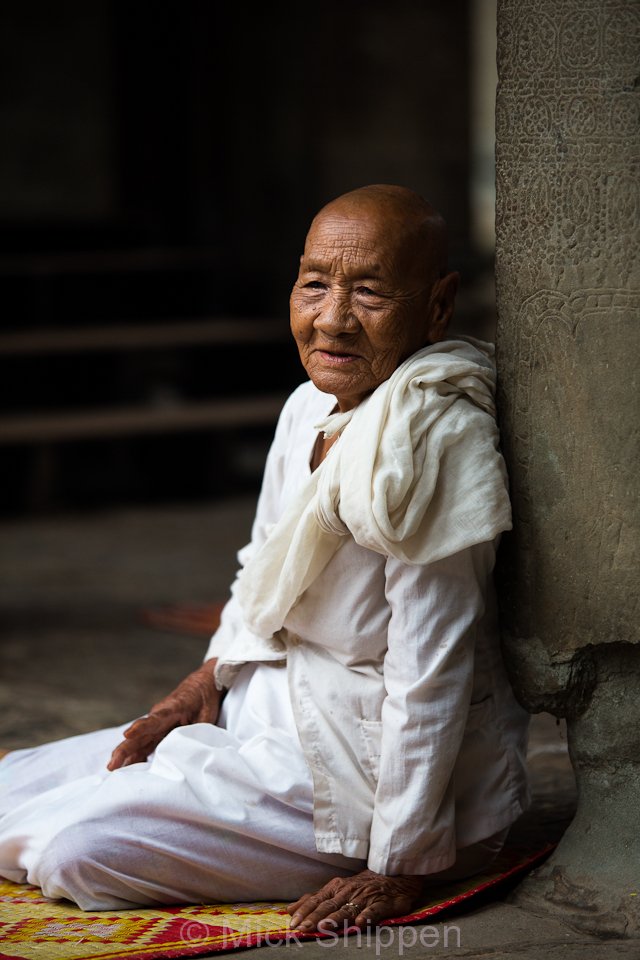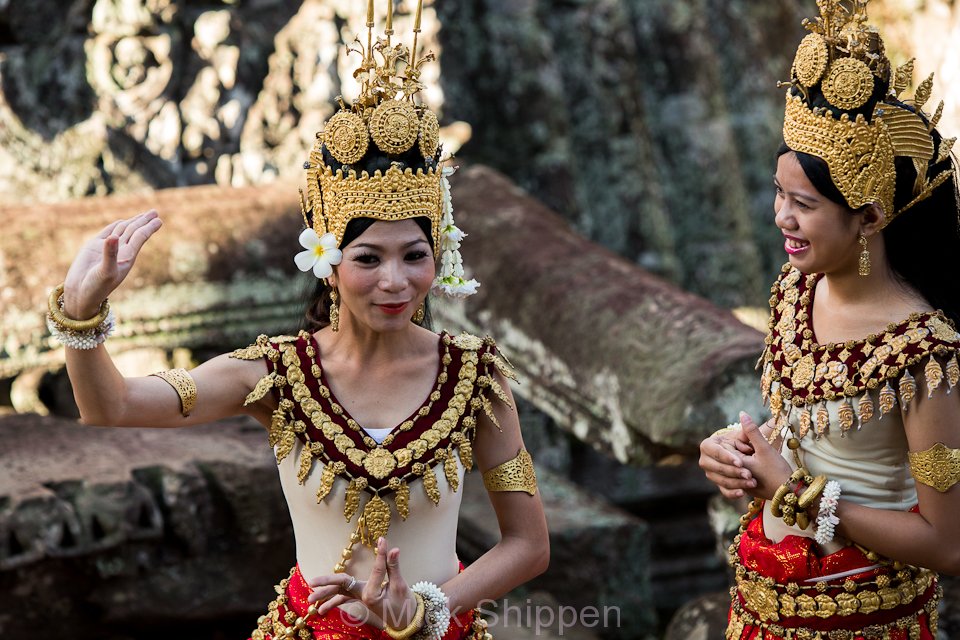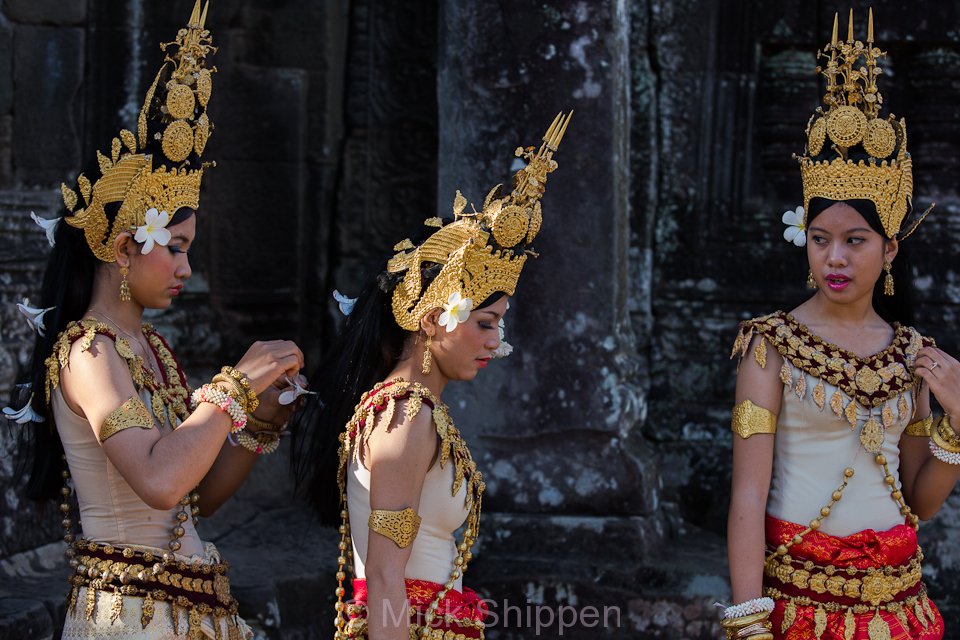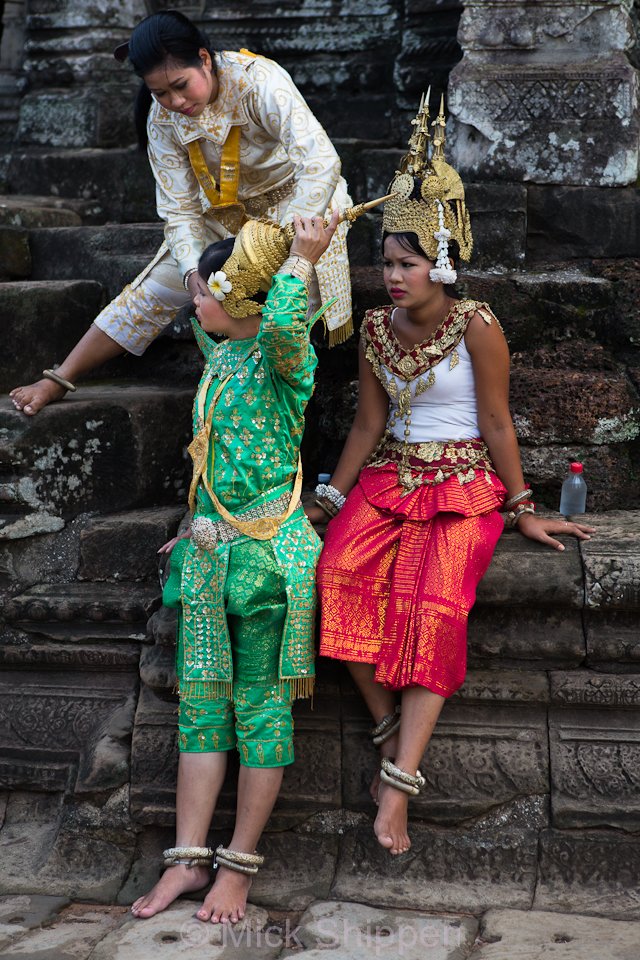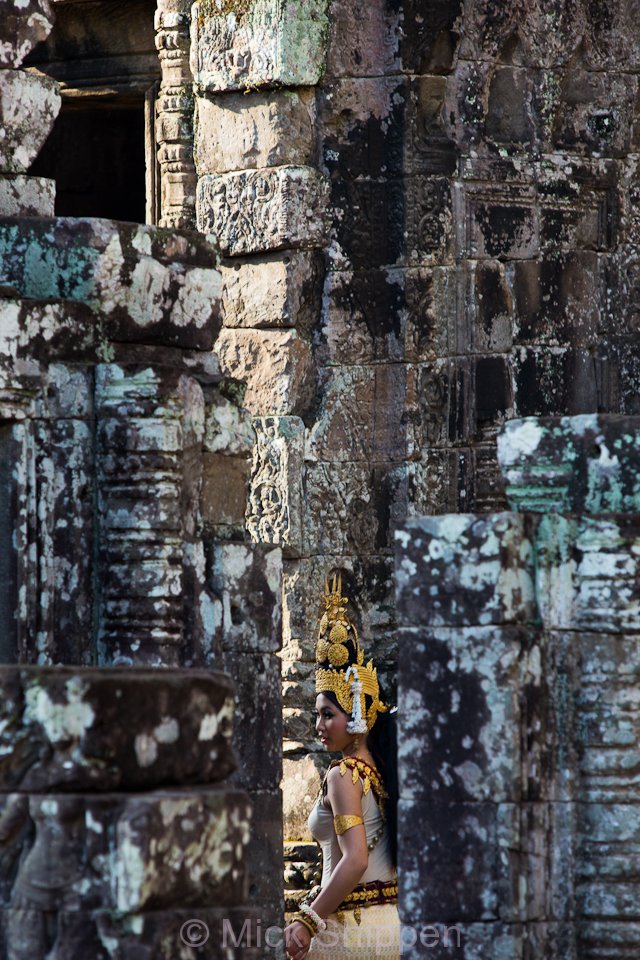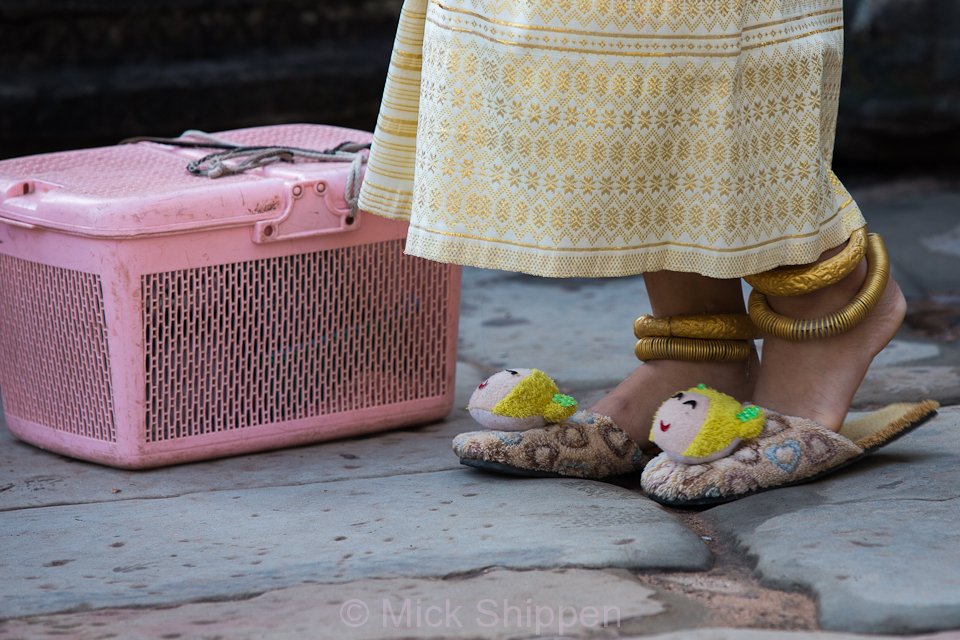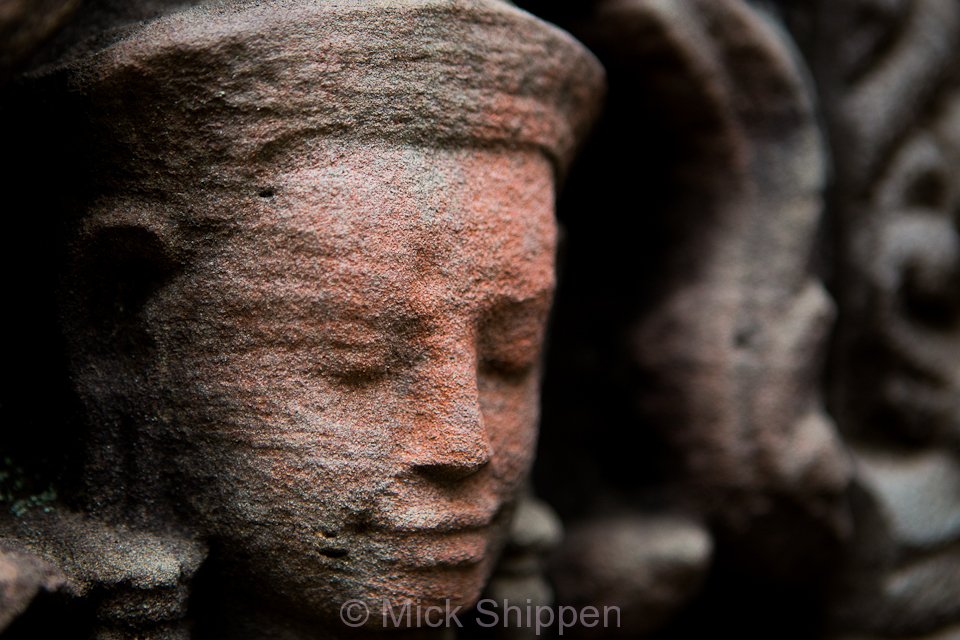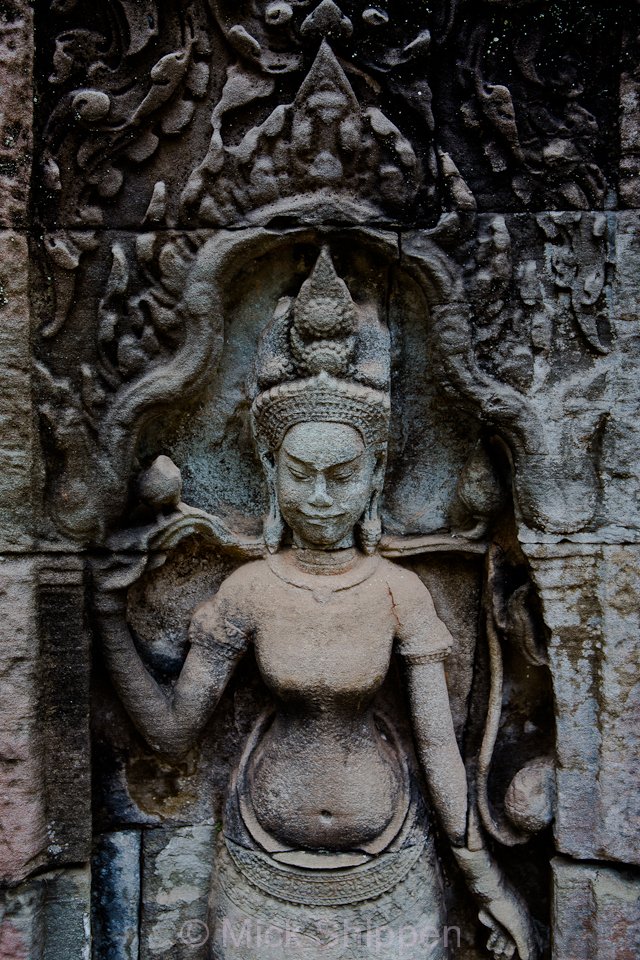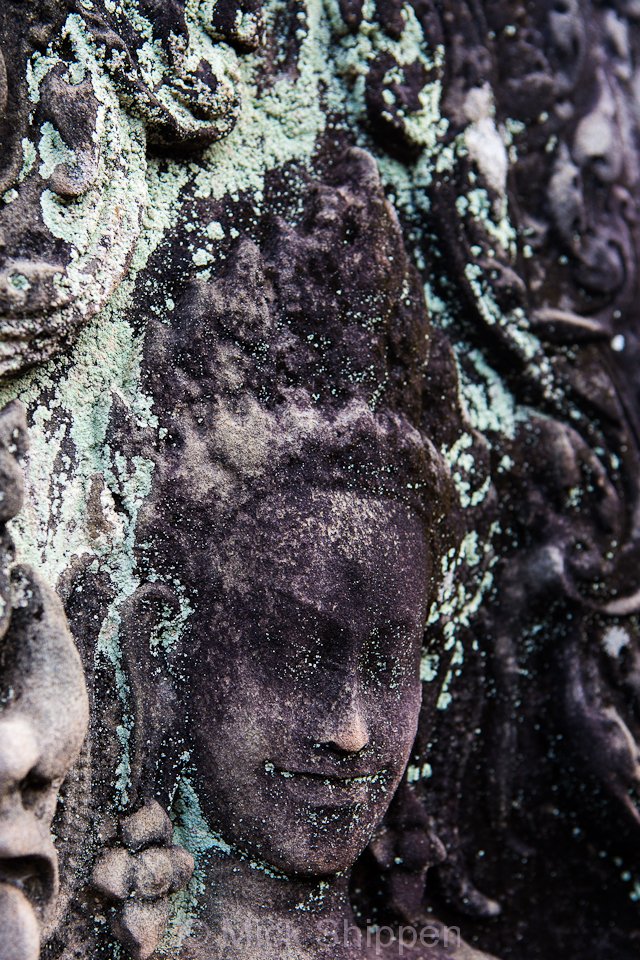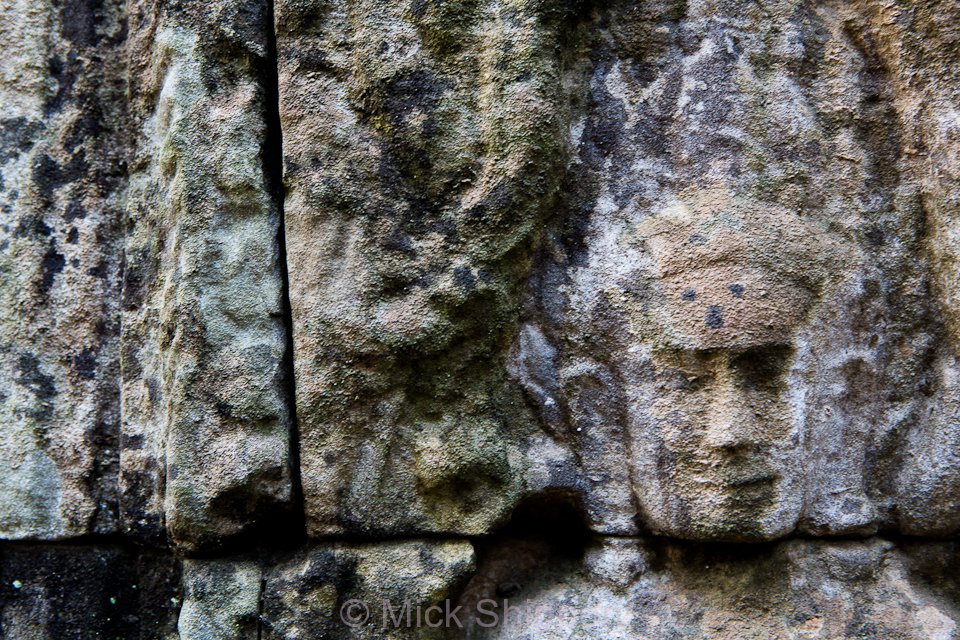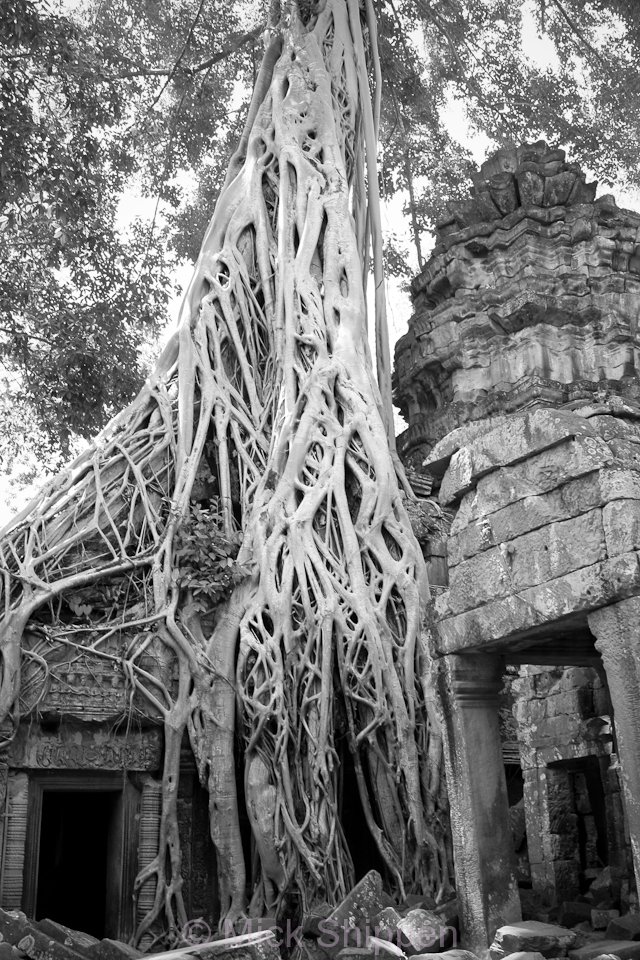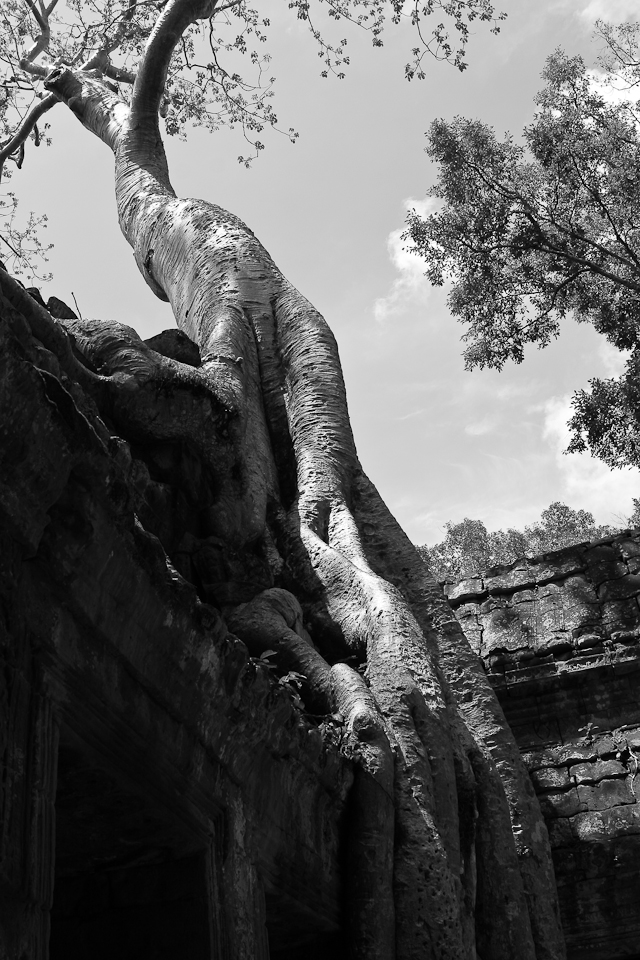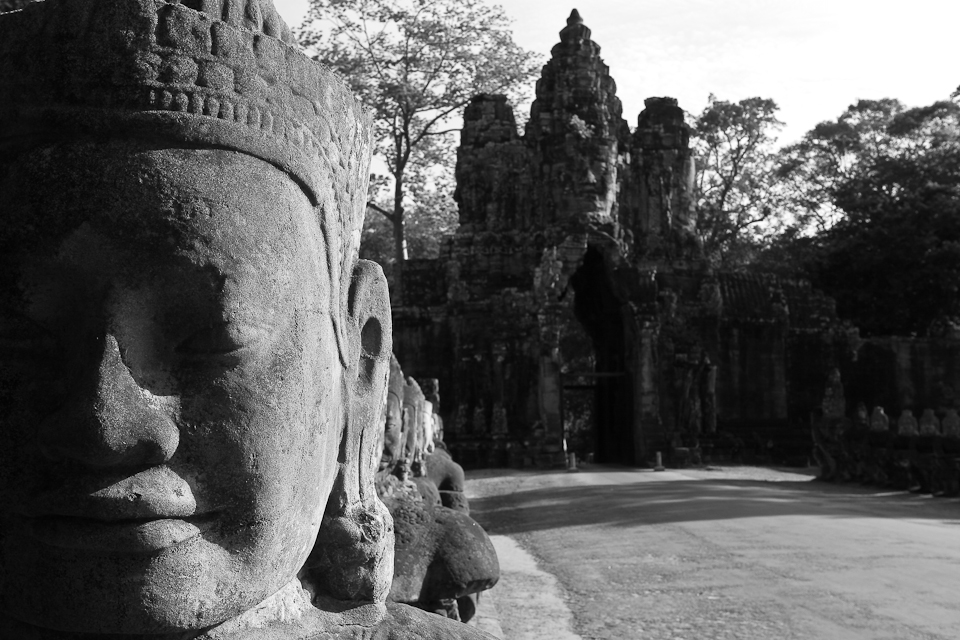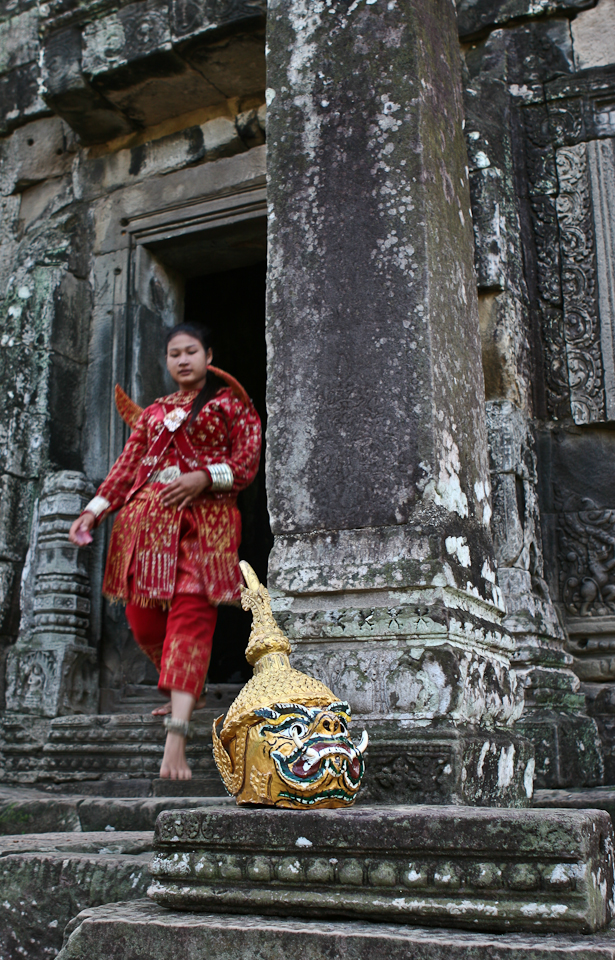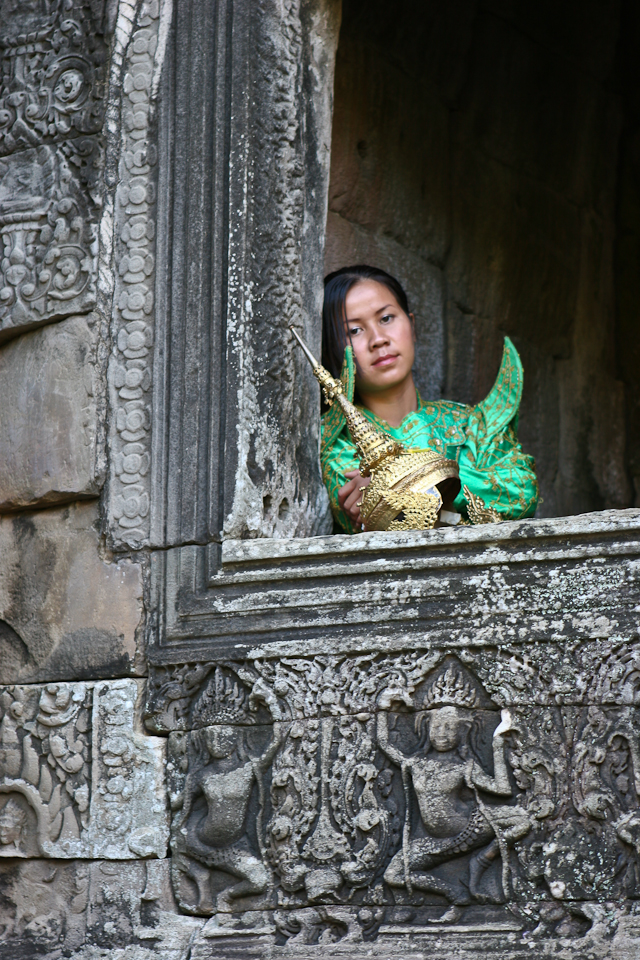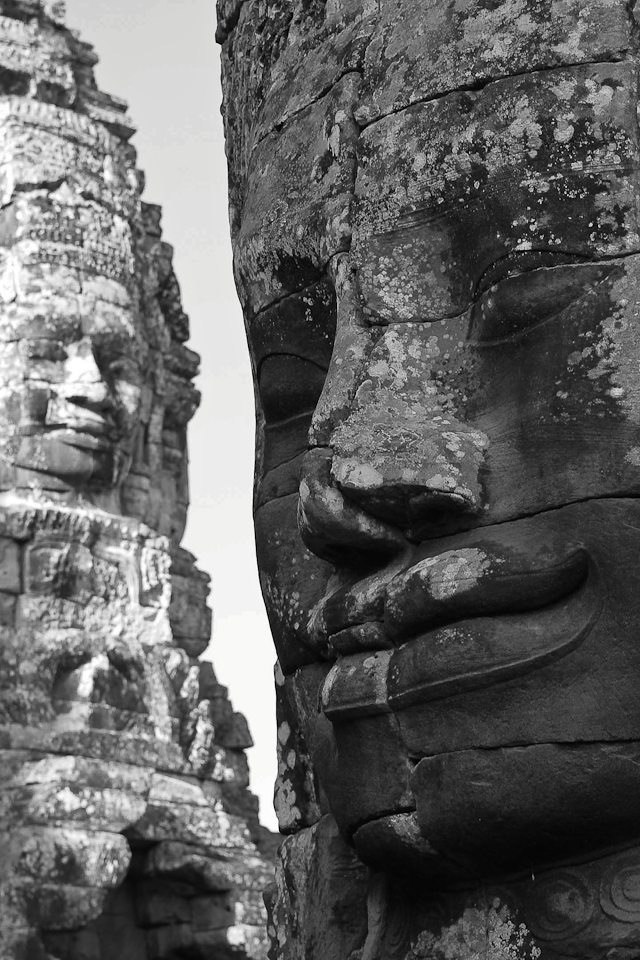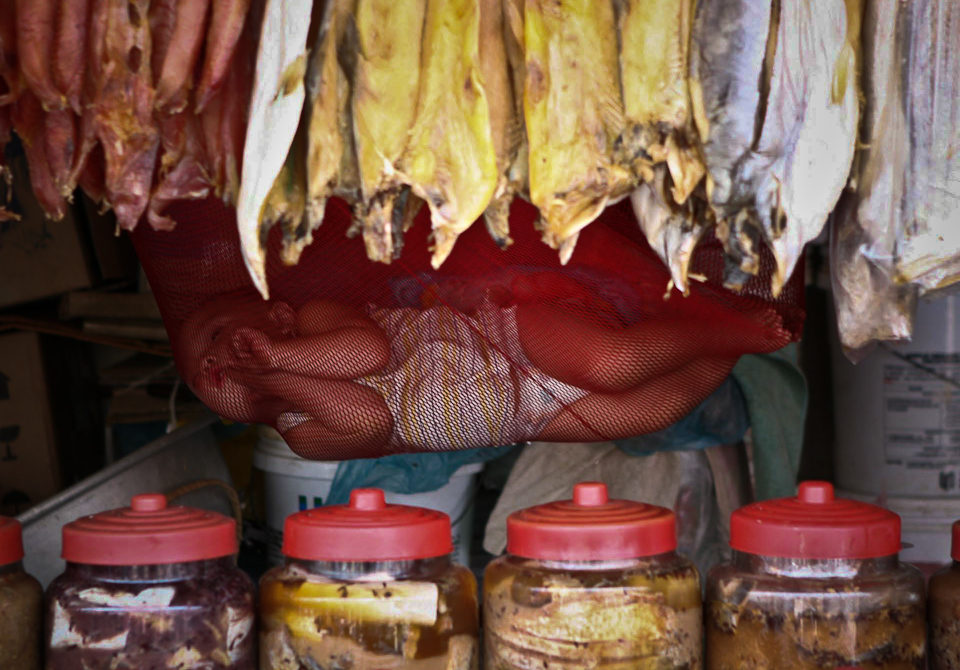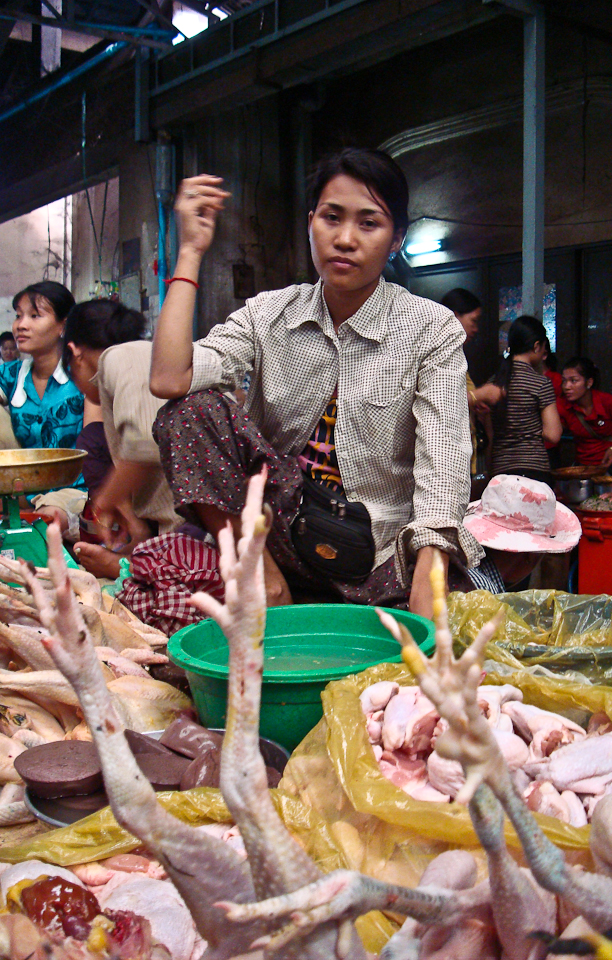The Monk & the Nun
It has been disturbing to witness what has happened to Angkor over the last few years. Even now with the rainy season in full swing visitor numbers are still high. As one hotelier said to me, ‘for the Chinese and Koreans there is no low season’. Nevertheless, the next month or two is without doubt the best time to go. Leave it until November and you won’t be able to turn sideways without hitting another tourist in the face with your 70-200 mm lens.
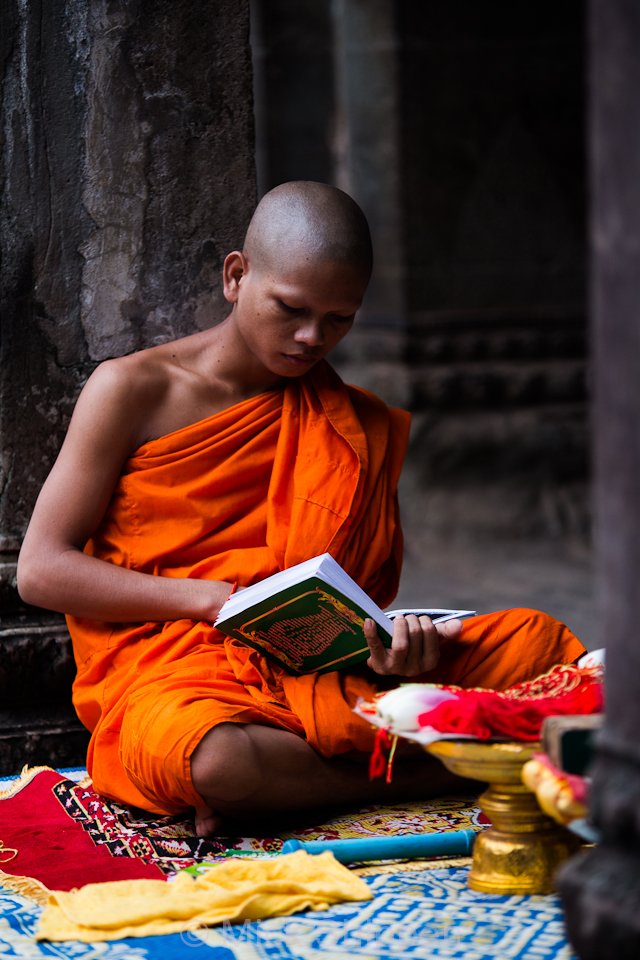
The highlight for many is Angkor Wat; dawn ‘til dusk it simply heaves. The temple complex covers an area of one square kilometre and comprises of three levels around a central tower. The entranceway is particularly impressive and is the site of the early morning pilgrimage for the obligatory sunrise photo shoot. Inside the confines of the temple the inner and outer walls are covered with exquisite bas reliefs. If you want to get a detailed explanation of what you are looking at, you can hire an official guide at the entrance to the site.
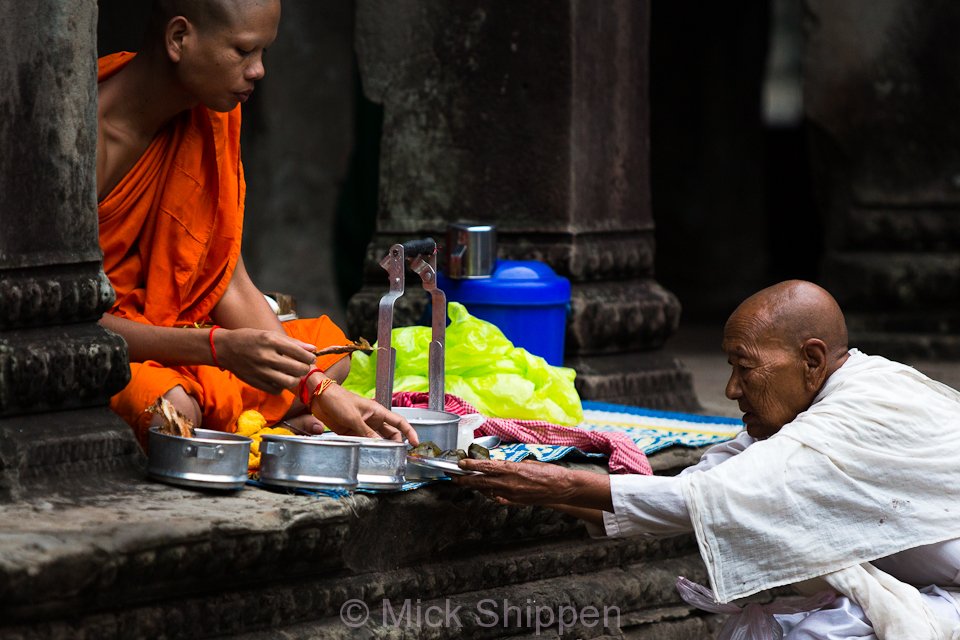
Due to the millions of visitors, the monks of Angkor are powerless to resist the lure of the dollar, and the monumental site which was once lost to the jungle now functions as a temple again. At its heart is a small shrine where a monk sits patiently waiting to extract money from the faithful (or gullible, depending on your perspective) in return for a splash of holy water and a blessing muttered in Sanskrit. If you are there early enough and sit quietly within the shaded cloisters you can almost imagine a time before Buddhism was corrupted by cash, egotism and self-interest, if indeed such a time ever existed.
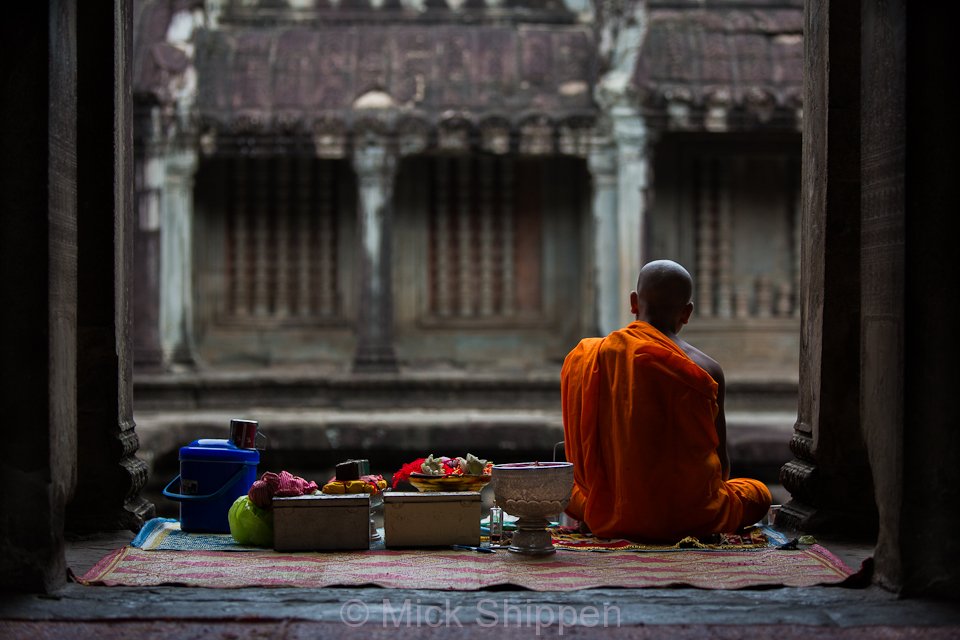
While I was there, a nun approached a monk who had been quietly reading and presented his breakfast as an offering. As she handed over the food, he averted his eyes, recited his blessing and then tucked into his food while she moved on and prayed to an image of Buddha. It was a timeless scene played out at Angkor Wat for centuries.
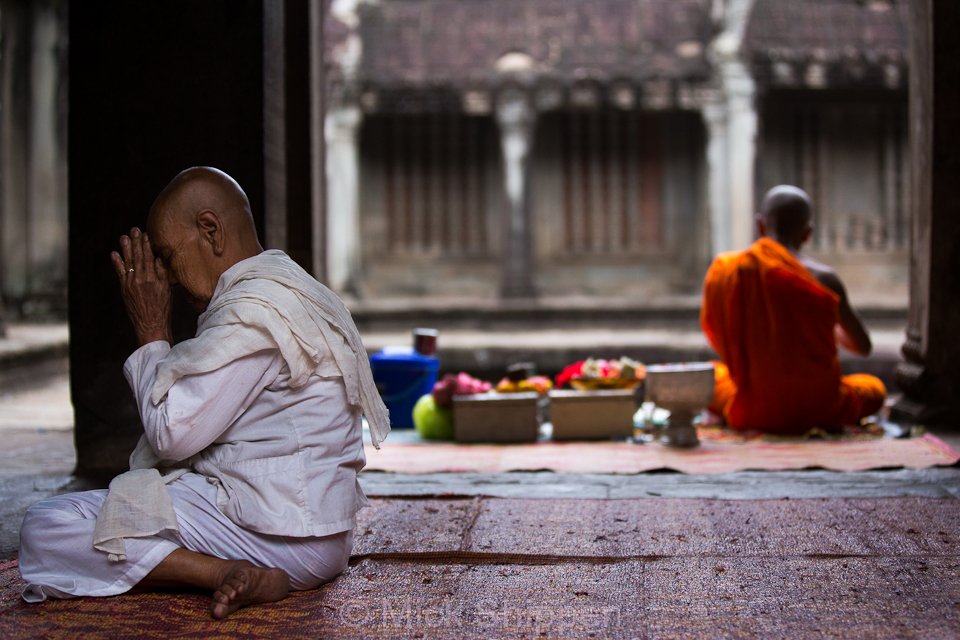
Getting there:
Flying into Siem Reap from Thailand you are at the mercy of Bangkok Airways’ monopoly of the route and its grossly inflated price for the 50 minute flight. At this time of year, expect to pay around 11,000 baht. Flights leave several times a day from Suvarnabhumi Airport. A visa on arrival is available at Siem Reap airport for $20. The entry procedure is quick and efficient. If you have arranged your accommodation in advance, ask for an airport pick-up. The ride into town takes around 20 minutes. There is no longer a departure tax at the airport.
